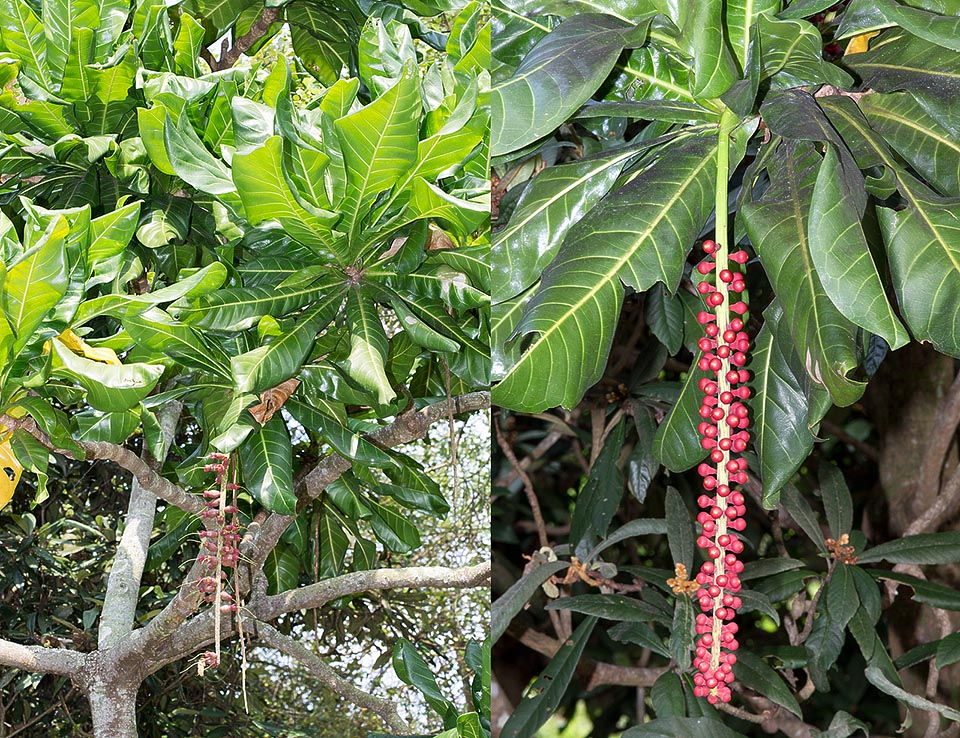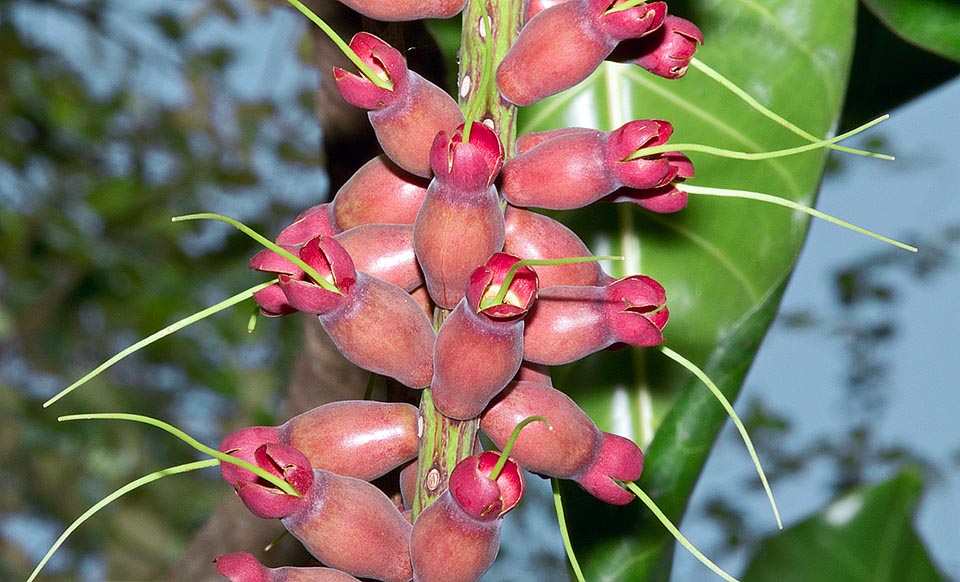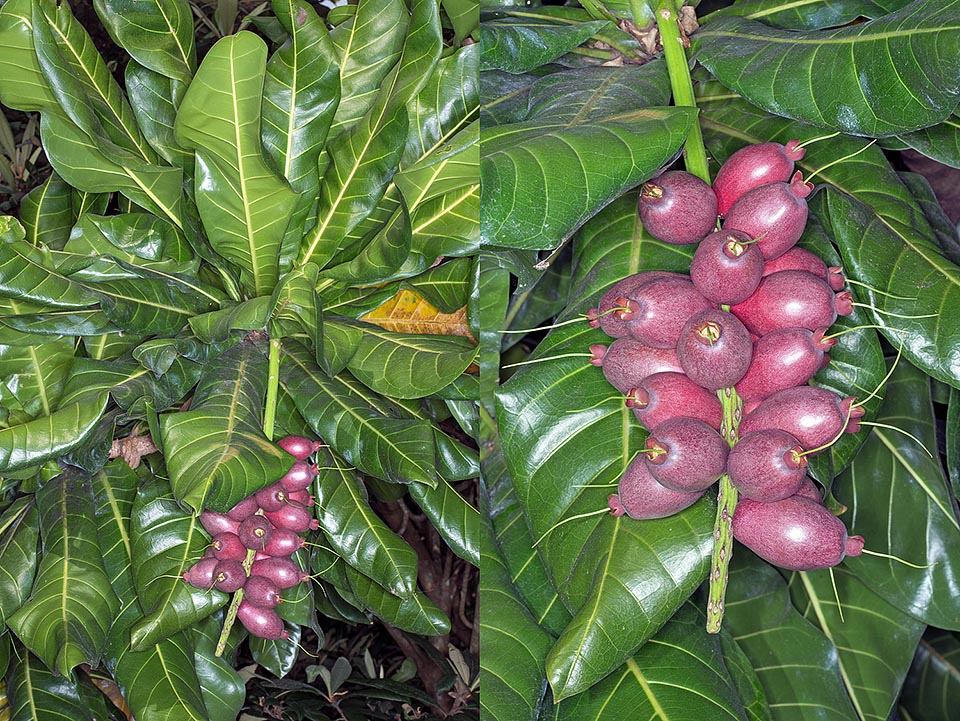Family : Lecythidaceae

Text © Pietro Puccio

English translation by Mario Beltramini

Barringtonia edulis is an evergreen of Fiji and Vanuatu islands. Little ramified, it can be 6-18 m tall. On the right, inflorescence in bud © Giuseppe Mazza
The genus is honoured to the English lawyer and naturalist Daines Barrington (1727-1800); the name of the species is the Latin term “edulis” = edible, eatable, with reference to the seeds.
Common names: box-fruit tree, cut nut, heart tree, pan nut, pao nut, yum yum tree (English); navele (Bislama); vutu, vutu valu, vutu kana (Fijian); nuez de Fiji (Spanish).
The Barringtonia edulis Seem. (1866) is a little ramified evergreen tree, 6-18 m tall, with erect trunk of 30-40 cm of diameter and smooth grey-brown bark. The leaves, grouped at the extremities of the branches on a 0,5-1,5 cm long petiole, are simple, entire with slightly undulated margins, oblong-elliptic with pointed apex, 16-45 cm long and 5-18 cm broad, coriaceous, of glossy intense green colour on the upper page, of paler colour below, and prominent nervations.

To the hermaphroditic flowers, spirally arranged on the rachis, follow oblong berries with persistent calyx © Giuseppe Mazza
The fruit is an indehiscent (which does not open spontaneously when ripe) oblong berry with persistent calyx, usually slightly at tetra or pentagonal section, tomentose, 5-10 cm long and of 3,5 cm of diameter, of colour varying from green-grey to red or purple, with fibrous mesocarp and woody endocarp enclosing one oblong white seed 2-3 cm long and of 1 cm of diameter.
It reproduces by seed in organic loam, with addition of sand or perlite per a 30% for improving the drainage, kept humid at the temperature of 22-24 °C.

The ripe fruit are tomentose, green grey, red or purple, with slight tetra or pentagonal section. They can be 10 cm long and of 3,5 cm of diameter. The seeds, the edible part of fruits, of pleasant taste, are eaten raw, boiled or roasted. Bark and leaves are locally used in the traditional medicine for various pathologies © Giuseppe Mazza
In its origin places it is often found planted in the villages around the houses and along the roads and the paths.
The seeds, the edible part of the fruits, of pleasant taste, are consumed raw, boiled or roasted; bark and leaves are utilized in the traditional medicine for various pathologies.
The wood is light, of a density of about 480 kg/m3, and is employed in the constructions, for coverings, paddles, tools and everyday objects and also, locally, as fuel.
Synonyms: Butonica edulis (Seem.) Miers (1875); Huttum edule (Seem.) Britten (1901).
→ To appreciate the biodiversity within LECYTHIDACEAE family please click here.
